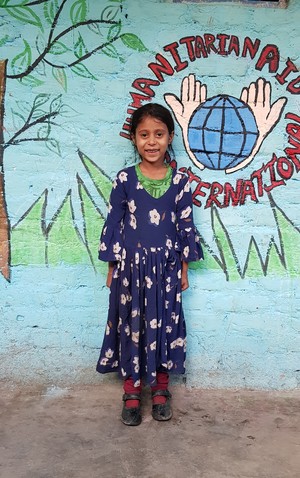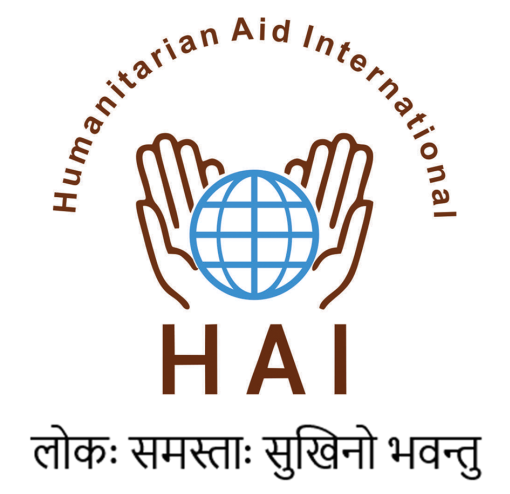Frequently Asked Questions About Sponsoring a Child
What is HAI sponsorship programme all about?

Investing in a child’s development ensures a better future of the child, her family, her community and eventually of the country. Millions or children, born in extreme penury, are denied equal opportunities of growth and development. Children of refugee families face more challenges as they often have less entitlements than citizens. Civil society can play a role to break this vicious cycle and brighten life of a refugee child through systematic support.
HAI invites people to join our efforts to give a meaning and brighter future to the children of migrants from Pakistan, who have arrived here seeking a better and protected future by making a monthly or yearly contribution towards their comprehensive development.
What is the origin of these refugee?
According to an estimate, approximately 5,000 people, facing religious persecution, discrimination, threat of abduction and forceful conversion flee from Pakistan to India every year. Mostly they hail from the Sindh province of Pakistan and taken refuge in Rajasthan, Gujarat and Delhi. There are three refugee camps in Delhi, located in Majnu ka Tila, Rohini and Adarsh Nagar. Another camp is coming up under the Signature Bridge. As of now, HAI works in the Majnu ka Tila camp, and planning to expand to other camps.
What are the policy provisions for them in India?
The Government of India, through its gazette published on 8 September 2015, created special provisions for the minorities of Pakistan, Bangladesh and Afghanistan, if taken refuge in India. This gazette creates provisions for them to obtain Aadhar card, PAN card, open a bank account, access health and education facilities, work in informal sector and also buy a small dwelling unit(which they can’t sell off until they get the Indian citizenship). On 11 December 2019, the Government of India also passed the Citizenship (Amendment) Act, which creates provision for these refugees to seek Indian citizenship if arrived prior to 31 December 2014.
What are the development challenges in the Majnu ka Tila camp?
The camp, located on the floodplains of river Yamuna, came into existence in 2013 and currently hosts 120 refugee families with an approximate population of 600 people. A brief report on the camp can be read here.
Most of the children attend government schools, but their scholastic level is poor. Most of them dropout as they advance to senior classes. Please access the education factsheet here.
Because of the exposure to unhygienic conditions, seasonal diseases are common in the area. Many people suffer from severe or life impairing diseases. Given the economic hardship, they can only access government hospitals, which often don’t provide the timely and best solutions. Please access the health factsheet here.
The camp has two blocks of communal toilets, no bathing space and no system of garbage disposal. Please access the water, sanitation and hygiene (WASH) factsheet here.
Almost all the migrant families were agrarian back in Pakistan. Men lack any skills but agriculture, and women, although highly skilled on traditional Sindhi embroidery, were confined to domestic roles only. Lack of skills is a big barrier for them to seek employment in India. Young people mostly sell mobile covers to support the family needs. The income is certainly not enough to support the survival and development needs of the families.
What does HAI do in the camp?
HAI works across five domains in the camp, i.e., health, education, basic amenities, vocational training & income generation and legal assistance. The overall objective is to ensure comprehensive development of each refugee for their eventual integration in India through the citizenship process. While children remain centre of the programme, HAI also pays emphasis on women, youth and persons with disabilities of the camp.
As of now HAI has accomplished the following in the camp:
- Individual solar panels to each household
- Installation of street solar lights
- Tuition centres – one for boys and another for girls
- Vocational training and income generation centre benefitting 72 women
- Rs 6.56 lakhs approved for permanent electricity connection through a NHRC petition
- Toilet conditions have been improved and one new toilet block is constructed
- Regular heath check-up and referral support in collaboration with the RML hospital
- Winter materials such as blankets and warm cloths to each family
- Mosquito net to each family to protect them from water borne diseases
- Special care to special needs people including supplementary nutrition
- Support to individuals and families to obtain long-term visa
What does the sponsorship programme entail?
Individual donors commit to sponsoring the development of a child and her family through a contribution of Rs 1100 a month or Rs 13,200 per annum. This contribution will not directly go to the sponsored child/family but utilised on the developmental activities across the five domains.
How would HAI be accountable to individual sponsors?

Each sponsor will receive a compete profile of the family. They will be informed about the activities once a year through the Annual Progress Report. During the year, they will also receive 2-3 communications from the sponsored child. Sponsors may also write letters to the sponsored child per their desire. Each sponsor would be encouraged to visit the family they are sponsoring to. HAI discourages any direct cash contribution to the sponsored families directly or indirectly, as HAI emphasises upon their self-reliance through development activities, instead of making them passive recipients of cash support.
*Names have been changed to protect the privacy of individuals.
